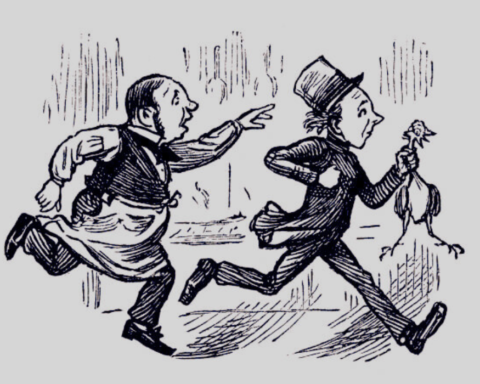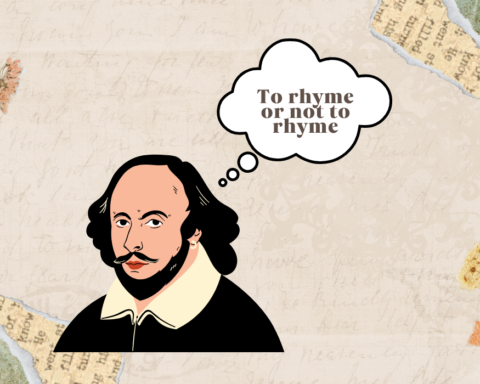Most of the publications picked between the 1770s and the 1830s lacked illustrations and graphic content. It was a costly pastime because of the worth of the material and the cost of inlaying and bindings.
During the early 19th-century, however, extra-illustration was a widespread trend in Britain and America. It was also called Grangerization and incorporated complementing a book’s visual material. This was done with extra pictures, paintings, illustrations, etc.
These pictures were taken or clipped from published sources. The end product, a one-of-a-kind masterpiece reflected the collector’s preference, dedication, and resources.
The evolution of the terminology “Grangerization”
Grangerization is the name given to extra-illustration in Britain after James Granger. He was an eighteenth-century renowned priest, author and collector. The book “Biographical History of England from Egbert the Great to the Revolution” was written by him in 1769.
The Biographical History contained images of historic personalities along with blank pages so readers could jot down details of their own. Collectors soon moved beyond the book’s initial intent, placing their own compilations within.

Grangerization became a complete subculture as a result of this. Enthusiasts used printed publications for multifaceted media ventures. They glued prints and lines of text from other books into the original volume bridging the gap between connected themes.
Joseph Lilly, a nineteenth-century book seller added illustrations to Granger’s book. Astonishingly, she grew the original version to an unprecedented 27 volumes.
The word “Grangerizing” did not become popular until the 1880s. This was the century following Granger’s demise. Granger, unfortunately, never “grangerized” a book, despite the fact that the technique bears his name.
Granger also started a trend of selling illustrations for certain volumes.
The chronology of Grangerization’s waning
The prominence of grangerization rose in the first part of the nineteenth century. Most of the works published between the 1770s and the 1830s were patriotic, archaic or historical in nature.
With the changing trends, the topics evolved and broadened. Theatres, literature, geography, leaders and memoirs of notable figures were among them.
However, not all regarded it as a novel and creative pastime. Gradually, the technique diffused into other publications and grew in scope.
To fit all the prints that were haphazardly thrown in, single publications became a collection. The fact that a grangerized book might easily double in size became a contentious issue.
The concept of deleting parts from one book to generate another was awful for some. Flawless and decent publications were castigated for their pictures and illustrations .Grangerization was described as a “monstrous activity” carried out by “ravenous and greedy book-collectors”.
Grangerites were labelled “knights of the shears and paste jars” by the Book Lover’s Almanac in 1893. They called it as a deception, deceit, and a misery to the flesh.
Another critic referred to it as a violent emotion or a fierce disturbance that must be attentively monitored and handled everywhere it arises, for it is an infectious and hysterical mania.
Prominent examples of Grangerization
A number of grangerization examples can be found throughout history. The first and foremost is the Granger’s Biological history.
Richard Bull (MP) wrote with James Granger on a constant basis regarding his print collections and its categorization.
The arrangement was done according to Granger’s archetypes. Richard Bull’s grangerized edition was called the Bull-Granger. It is presently in the Huntington Library’s collection in California.
Around the same period, Anthony Morris Storer amassed a sizable collection of extra-illustrated volumes, which he left to Eton College in 1799.

The copy of Thomas Pennant’s Some Account of London, extra-illustrated by John Charles Crowle, is a particularly stunning. It is an ancient specimen at the British Museum.
Crowle’s collection has over 3347 prints and drawings of London geography. It also includes depictions of historical events and individuals linked with London’s past. It occupied fourteen folio volumes wrapped in gold-tooled red leather.
Alexander Hendras Sutherland and his wife Charlotte, née Hussey, produced a huge number of extra-illustrated books and correlated items.
The Ashmolean Museum and the Bodleian Library currently own the Sutherland collection.
One collector recreated a book of Lord Byron’s 1828 biography from 2 to 5 volumes. It included 184 additional pictures and 14 letters and signatures.
Another transformed a three-volume 1872 memoir of Charles Dickens into nine large volume. It contained broadsides for performances, portraits and photos from graphic versions of the author’s works.
Gil Blas, a French-language book set in Spain, was allegedly expanded over the course of several decades. It resulted in tripling its initial four-volume length. Title pages and images from ancient and modern additions, and unrelated information, were included.
The Bible is another popular grangerized book, with owners adding surnames, baptismal documents, and other mementos. The original three octavo volumes of one notably grangerized Bible were three octavo volumes. The final output was a massive sixty folio volumes. This was due to the inclusion of almost 30,000 additional drawings. The Bible is presently housed in the Huntington Library.
Conclusion
Since its inception, the practice of additional illustration has sparked controversy. Proponents praised it as “exquisite craftsmanship,” whilst opponents claimed it was “cutting apart an excellent book to produce a bad one.”
In any case, grangerizing has resulted in some truly remarkable works of art. Different title pages, watercolors, and engravings, original sketches and text pages have all been discovered by antiquarian book hunters.
It’s a lovely and yet lost form of art. But, there’s something special about a book with additional illustrations. Its one-of-a-kind and there’s no other print like it elsewhere on the planet. It has a crafted quality to it that adds a personalized feel to a bulk book.
Of course, the owner’s character shines through in the decisions of what to put in, what to remark, and what to keep blank.
One of the benefits of modern digital technology is that we may easily duplicate content without abolishing original work. Grangerizers nowadays, of course, face their own ethical dilemmas, such as plagiarism.
Politigory provides in-depth reviews of science, history, humanities, religion, social sciences and arts












